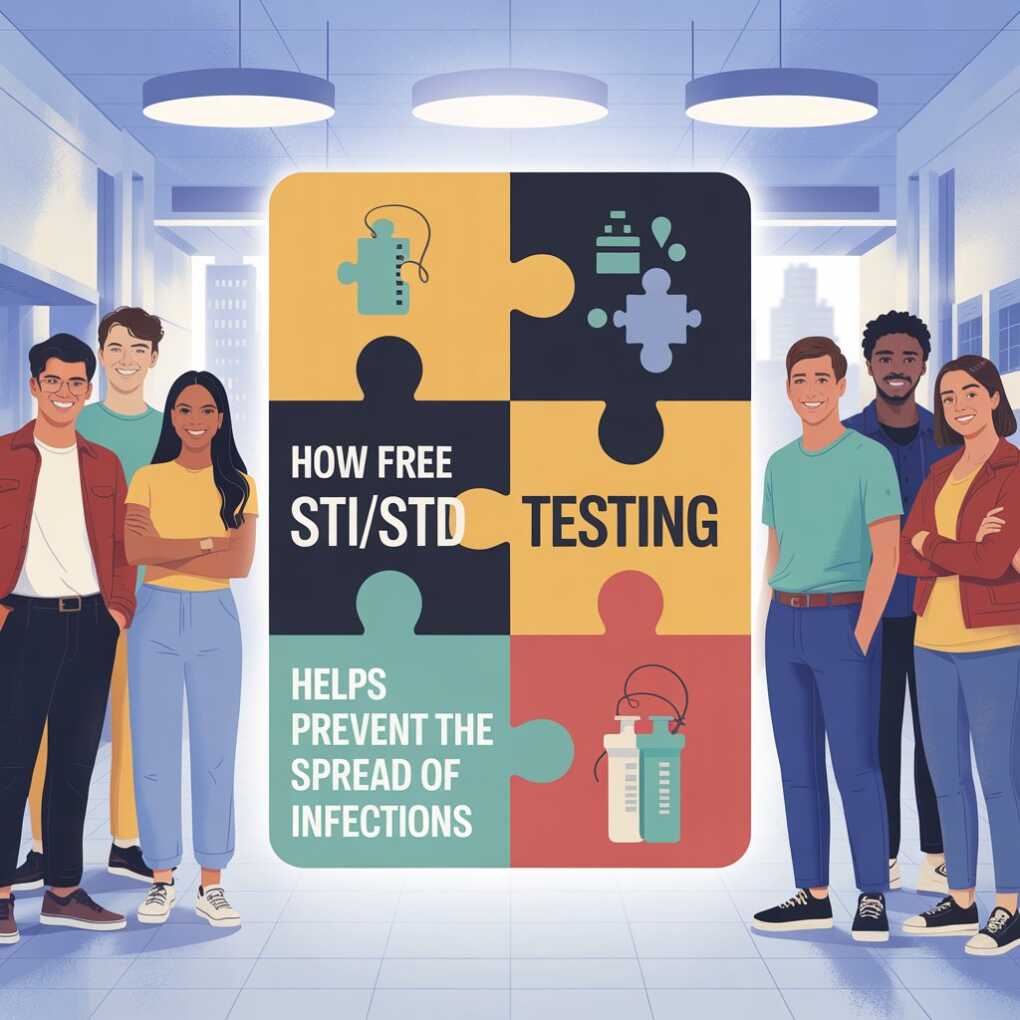Sexually transmitted infections (STIs), also known as sexually transmitted diseases (STDs), remain a significant public health concern worldwide. Many carry these infections without showing symptoms, unknowingly passing them on to others. Free testing services play a crucial role in controlling the spread of these infections by making it easier for people to learn their status and seek treatment if necessary. We will explore how free STI/STD testing encourages early detection, reduces transmission rates, and supports overall community health. Access to testing removes financial barriers and helps break the infection cycle through timely intervention.

The Role of Free STI/STD Testing in Infection Control
Encourages Early Detection and Treatment
One of the main benefits of free STI/STD Testing is that it promotes early diagnosis. Many infections can exist without obvious symptoms, meaning individuals might unknowingly transmit diseases to sexual partners. When testing is freely accessible, more people are likely to get tested regularly, even if they feel healthy. Early detection allows prompt medical treatment, which can effectively cure or manage many infections. This not only improves the health outcomes for the individual but also prevents the disease from spreading further. Early treatment reduces the duration a person is contagious, lowering the risk of passing the infection to others. This proactive approach is vital in preventing outbreaks and maintaining public health.
In addition to the benefits of free STI/STD testing, accessing these services at local clinics can significantly enhance community health. For residents in Lebanon, Oregon, there are convenient options available. By visiting local clinics for std testing lebanon, individuals can receive confidential and professional care, ensuring early detection and treatment. This proactive approach not only helps in managing personal health but also plays a crucial role in preventing the spread of infections within the community. Making use of these resources empowers individuals to take control of their sexual health, contributing to a healthier and more informed society.
Removes Financial Barriers to Testing
Cost often prevents many individuals from seeking STI/STD testing. Paying for tests can be a major obstacle without insurance or sufficient income. Free testing services eliminate this barrier, allowing people from all economic backgrounds to access necessary healthcare. By providing free testing, health organizations encourage those who might otherwise avoid testing to take that important step. This inclusivity ensures that infections are not left undiagnosed due to financial constraints. When a larger portion of the population gets tested, it creates a broader safety net, catching infections early and preventing widespread transmission. Making testing affordable and accessible is essential in communities with limited healthcare resources.
Supports Confidentiality and Reduces Stigma
Many individuals avoid testing due to fear of judgment or concerns about privacy. Free STI/STD testing programs often emphasize confidentiality, creating a safe environment where people feel comfortable seeking help. This reduces the stigma associated with sexual health and encourages more open conversations around prevention and care. When people know their privacy is respected, they are more willing to take responsibility for their health and get tested regularly. Lowering the stigma surrounding STIs helps normalize testing as a routine part of healthcare, much like other preventive screenings. This cultural shift is critical to encouraging widespread participation and early intervention.
Promotes Awareness and Education
Free testing centers frequently provide educational resources alongside testing services. These resources help individuals understand how infections are transmitted, symptoms to watch for, and safe practices to reduce risk. Educating people during the testing process empowers them to make informed decisions about their sexual health. Knowledge gained through these programs can lead to healthier behaviors and increased use of protection methods, such as condoms. As awareness spreads, communities become better equipped to prevent infections before they occur. Combining testing with education creates a comprehensive approach to disease prevention and promotes long-term health improvements.
Facilitates Partner Notification and Treatment
When an individual tests positive through free STI/STD testing services, they often receive guidance on notifying sexual partners. Partner notification is critical because it helps identify others who may be infected but unaware. Encouraging partners to get tested and treated interrupts the chain of transmission and reduces reinfection rates. Some testing programs even provide anonymous notification services to make this process easier and more comfortable. By involving partners in the testing and treatment process, communities can reduce the overall prevalence of infections. This coordinated effort ensures that treatment reaches beyond the individual, benefiting the wider population.
Supports Public Health Surveillance and Response
Free testing contributes valuable data to public health systems. Health authorities gain better insight into infection trends and patterns when more people get tested. This information is essential for developing targeted prevention programs, allocating resources efficiently, and responding swiftly to outbreaks. Public health surveillance relies on widespread testing to monitor the spread of infections and evaluate the effectiveness of interventions. Therefore, Free testing programs serve individuals and the community by enhancing disease tracking and control efforts. A well-informed response ultimately reduces the impact of STIs on society.
Conclusion
Free STI/STD testing plays a vital role in preventing the spread of infections by encouraging early detection, removing financial barriers, and reducing stigma. It promotes education, facilitates partner involvement, and supports public health initiatives that protect entire communities. When testing is accessible to everyone, it empowers individuals to take control of their sexual health and helps interrupt transmission chains that would otherwise continue unchecked. Expanding and supporting free testing services is essential for building healthier communities and managing the ongoing challenge of sexually transmitted infections.
